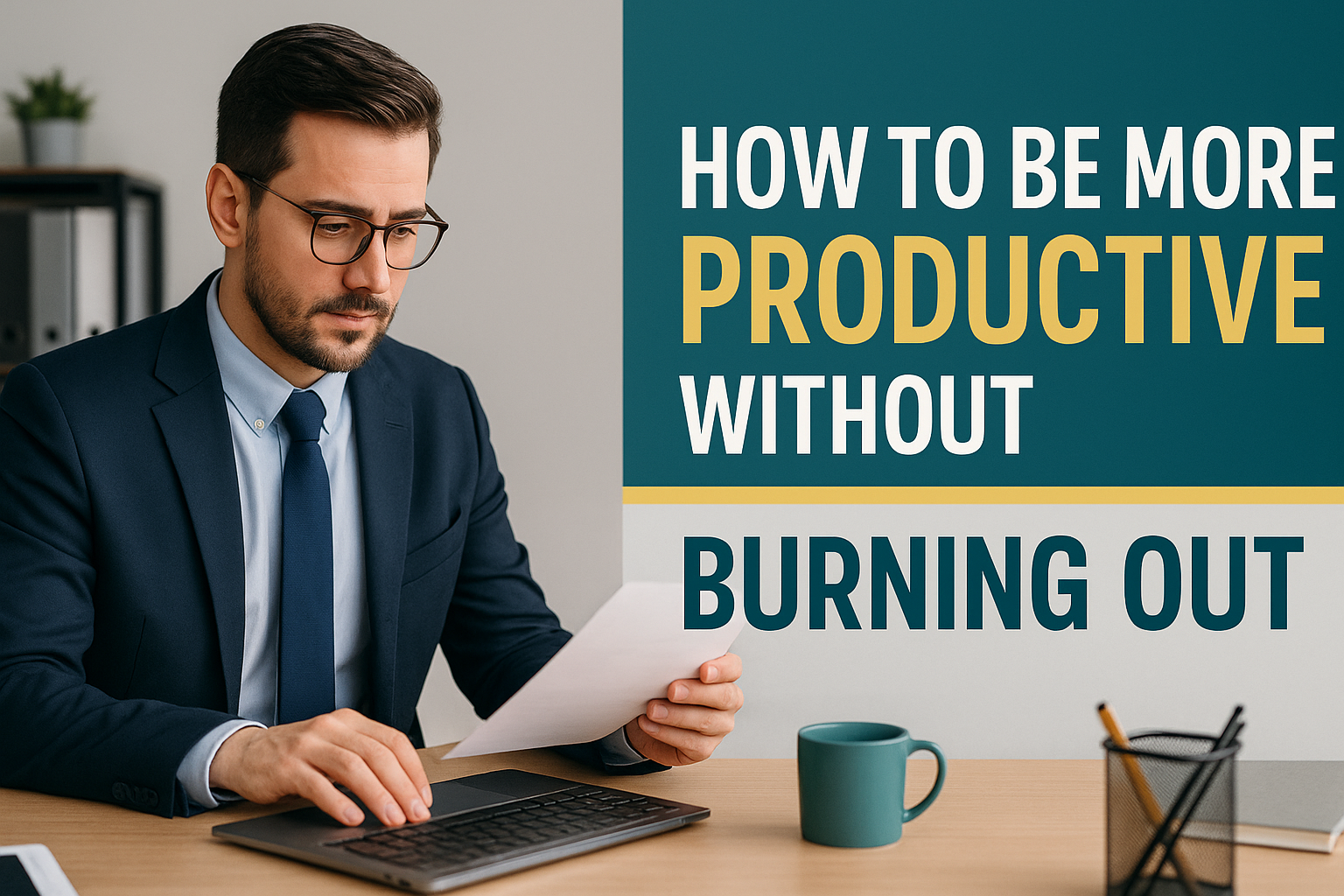How to Be More Productive Without Burning Out
English Level: Intermediate | Date: April 24, 2025
Read the article aloud on your own or repeat each paragraph after your tutor.
Rethinking Productivity for the Modern Professional
Working Smarter, Not Harder
We all want to get more done. But working harder doesn’t always mean working better. In fact, if you keep pushing without breaks, you might end up burned out and doing less in the long run.
That’s why many successful professionals are learning to be productive in a smarter way. Instead of doing more hours, they focus on high-impact work, set better priorities, and take short breaks to recharge their minds.
The Pomodoro Technique: A Simple Productivity Hack
One popular method is called the Pomodoro Technique. You work for 25 minutes, then take a 5-minute break. After four sessions, you take a longer 15- to 30-minute break. This cycle helps prevent mental fatigue and boosts focus by giving your brain regular intervals of rest. It’s especially useful for people who struggle with long periods of concentration, as it encourages both structure and balance. Over time, the Pomodoro Technique can help you build a healthy rhythm for deep work while maintaining your energy throughout the day.
Focus on What Matters: The Power of a Short To-Do List
Another helpful idea is to limit your to-do list to just three main tasks per day. This strategy cuts down on overwhelm and forces you to prioritize what’s truly essential. Instead of feeling scattered with a long list of minor tasks, you channel your energy into accomplishing what matters most. Choosing three key tasks helps you stay focused, maintain mental clarity, and avoid decision fatigue throughout the day. Crossing off those three things gives you a feeling of progress and momentum—and that positive feedback loop keeps your motivation high.
Don’t Ignore Your Health: Recharge Your Body to Recharge Your Mind
Also, don’t forget to take care of yourself. Drink water to stay hydrated, which helps with focus and reduces fatigue. Stretch your body regularly to release tension and improve circulation, especially if you’re sitting for long periods. Try to get some sunlight during your breaks—even a few minutes outside can boost your mood and help regulate your sleep cycle. These small self-care actions support your mental clarity and physical well-being, which in turn make it easier to stay productive and avoid burnout throughout the day.
Final Thought: Less Can Be More
The secret to doing more? Sometimes it’s doing less, but doing it better. Instead of chasing constant activity, focus on the tasks that bring the most value. Quality beats quantity when it comes to productivity. By slowing down and working with intention, you not only avoid burnout—you produce stronger results, feel more satisfied, and build better habits for the long term. In today’s fast-paced world, mastering this mindset is a true competitive edge.
This article was inspired by Harvard Business Review.*
Vocabulary
- Burned out (adj.): mentally and physically exhausted.
Example: She felt burned out after working 12-hour days for weeks. - High-impact (adj.): having a strong effect.
Example: He focuses on high-impact activities that bring the best results. - Recharge (verb): to regain energy or strength.
Example: I took a short nap to recharge before the next meeting. - Session (noun): a set period of time for an activity.
Example: Each study session lasts about 30 minutes. - Motivation (noun): the reason to keep trying.
Example: Her motivation to finish the project was strong. - Technique (noun): a method or way of doing something.
Example: He uses a special technique to stay focused at work. - To-do list (noun): a list of tasks you plan to complete.
Example: My to-do list only has three items today. - Priorities (noun): things that are most important.
Example: Set your priorities before starting your day. - Stretch (verb): to extend your muscles to relax.
Example: She stood up to stretch her back after sitting for hours. - Sunlight (noun): light from the sun.
Example: A little sunlight can help improve your mood.
Discussion Questions
About the Article:
- What is the main message of the article?
- Why might doing more not always be better?
- What is the Pomodoro Technique, and how does it help?
- How can limiting your to-do list improve productivity?
- What are some ways to take care of yourself during work?
About the Topic:
- Do you ever feel burned out? What do you do to recover?
- What helps you stay focused during the day?
- How many breaks do you usually take during work?
- Do you think long hours help or hurt productivity?
- What’s one small change you could make to be more productive?
Idiom of the Day
“Less is more”
Meaning: Doing less can sometimes be more effective than doing a lot.
Example: When it comes to design, less is more—keep it simple.
Want more tips like this? Sign up for the All About English Mastery newsletter for weekly lessons, vocabulary builders, and speaking practice prompts.
Follow our YouTube Channel @All_About_English for more great insights and tips.


